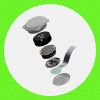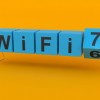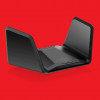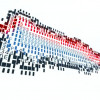Radio ID chips may track banknotes
Source: CNet News
Radio tags the size of a grain of sand could be embedded in the euro note if a reported deal between the European Central Bank (ECB) and Japanese electronics maker Hitachi is signed.
Japanese news agency Kyodo was reportedly told by Hitachi that the ECB has started talks with the company about the use of its radio chip in the banknote.
The ECB is deeply concerned about counterfeiting and money-laundering and is said to be looking at radio-tag technology.
Last year, Greek authorities were confronted with 2,411 counterfeiting cases and seized 4,776 counterfeit banknotes, while authorities in Poland nabbed a gang suspected of making more than a million fake euros and putting them into circulation.
To add to the problem, businesses also find it hard to judge a note's authenticity, as current equipment cannot tell between bogus currency and old notes with worn-out security marks. Among the security features in the current euro are threads visible under ultraviolet light.
"The main objective is to determine the authenticity of money and to stop counterfeits," Frost and Sullivan analyst Prianka Chopra said in a report published in March.
"RFID (radio frequency identification) tags also have the ability of recording information such as details of the transactions the paper note has been involved in. It would, therefore, also prevent money-laundering, make it possible to track illegal transactions and even prevent kidnappers demanding unmarked bills," Chopra said.
RFID tags are microchips half the size of a grain of sand. They listen for a radio query and respond by transmitting their unique ID code. Most RFID tags have no batteries: They use the power from the initial radio signal to transmit their response.









































































